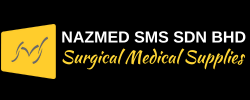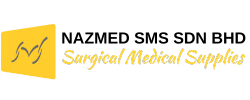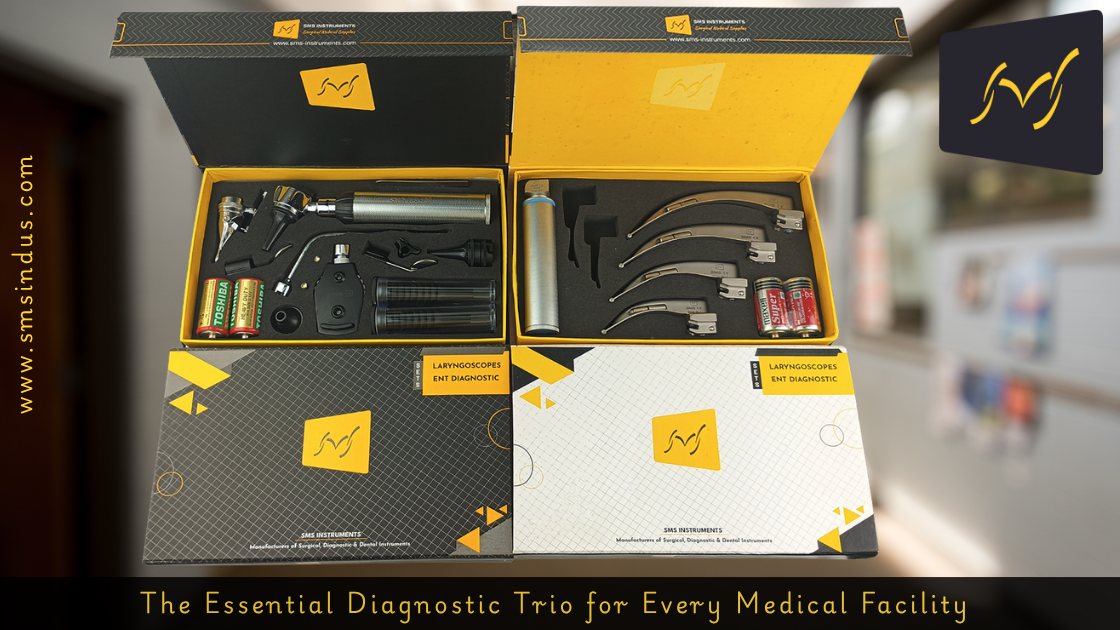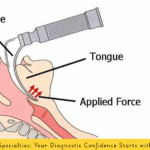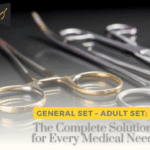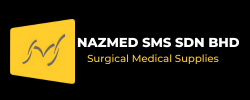Introduction: Why Diagnostic Visualization Tools Are Vital in Healthcare
In the dynamic world of medicine, the principle of “seeing is believing” holds ultimate authority. Before any complex treatment plan can be drawn, a definitive diagnosis must be reached, and this process overwhelmingly relies on high-quality diagnostic visualization tools.
The Laryngoscope, the Otoscope, and the Ophthalmoscope represent the trifecta of essential instruments that extend the physician’s sight, allowing a non-invasive, yet detailed, look into some of the body’s most critical and inaccessible cavities: the airway, the ear, and the internal structures of the eye. These tools are far more than simple accessories; they are Hospital diagnostic equipment that convert internal pathology into visual data, securing the foundation of patient care.
At NAZMED SMS SDN BHD, we understand that the clarity and reliability of these instruments directly impact diagnostic accuracy. This comprehensive guide will delve into the specific engineering, clinical applications, and maintenance requirements of these three indispensable tools. It expands on the importance of quality discussed in our previous features, High-Quality Diagnostic Instruments | SMS Indus and ENT Universal Diagnostic Sets: Must-Have Tools.
Laryngoscopes: Ensuring Airway Clarity
The Laryngoscope is arguably the most critical visualization tool in emergency and surgical medicine. Its primary role is to provide a clear path and view of the larynx, enabling endotracheal intubation—the placement of a breathing tube into the trachea to secure the airway. Beyond this life-saving function, it’s a vital tool for assessing vocal cord mobility and laryngeal lesions.
Question: What are the main types of Laryngoscopes and why is illumination so important?
Types: Conventional, Fiber Optic, McCoy
- Conventional (Standard) Laryngoscopes: These use a standard handle and blade configuration where the light bulb (lamp) is located directly on the blade itself. While cost-effective, the light source is less consistent and more prone to damage during reprocessing. The Stainless steel laryngoscopes under the SMS brand, even in this category, are crafted for maximum durability and are autoclavable.
- Fiber Optic Laryngoscopes: These represent a significant leap forward in illumination. The light source (usually a powerful LED or Halogen lamp) is located in the handle, and the light is transmitted via bundles of optical glass fibers embedded within the blade.
- SMS Focus on Safety and Illumination Quality: The result is cool, bright, shadow-free light directed precisely at the glottis. Since the light-generating electronics are in the handle (away from the patient’s mouth), this design minimizes electrical risks and improves blade durability. Our Fiber optic diagnostic instruments blades are designed to offer the superior light distribution demanded by critical care.
- McCoy Laryngoscopes: This is a specialized, articulated blade. It features a hinged tip that can be manipulated by a lever on the handle.
- The Advantage: The McCoy Laryngoscope is essential for managing difficult airways, such as in patients with a stiff neck, cervical spine injury, or prominent teeth. The lever allows the clinician to lift the epiglottis indirectly without needing to apply excessive force to the head and neck, improving glottic view while minimizing trauma.

Uses in Anesthesia and Emergency Care
- Anesthesia: Laryngoscopes are used in nearly every general anesthesia procedure to secure the patient’s airway pre-surgery. Consistency and failure-proof design are non-negotiable.
- Emergency & Critical Care: In the ER, ICU, or during resuscitation, the laryngoscope is essential for immediate airway control. The tool must be easily accessible, highly visible, and instantly operational.
- Diagnostics: ENT specialists use flexible or rigid laryngoscopes to diagnose conditions like chronic hoarseness, vocal cord paralysis, laryngeal cancer, and chronic inflammation.
Ophthalmoscopes: The Window to Eye Health
The Ophthalmoscope is the only instrument that allows a physician to non-invasively view arteries, veins, and nerve tissue in a living body—specifically, the retina and optic nerve. The eye truly serves as a window to the systemic health of the patient.
Key Features and Types
- Direct Ophthalmoscope (The Standard): This is the most common device used by GPs, internists, and ophthalmologists. It provides a magnified, upright image of the fundus.
- Essential Features: High-quality Ophthalmoscope and otoscope kit combinations rely on a precision lens system (often called a Receptacle or Diopter Wheel) that allows the examiner to adjust the focus across a wide range, compensating for both the patient’s and the examiner’s refractive errors (e.g., from to diopters).
- Apertures and Filters: Different light beam sizes (apertures) and color filters (like green or blue) are crucial for viewing different retinal layers and pathologies.
- Indirect Ophthalmoscope: Used by specialists, this provides a wider field of view (though with less magnification) and a three-dimensional, inverted image, often used for peripheral retinal examination.

Importance in Detecting Retinal and Optic Nerve Conditions
Core Concept: How does an Ophthalmoscope help diagnose non-eye-related conditions?
The retinal vessels are direct extensions of the body’s vascular system. Any changes visible here often reflect systemic disease:
- Hypertension (High Blood Pressure): Chronic high blood pressure causes arteriolar narrowing and changes (e.g., A/V nicking) in the retina. An accurate view is critical for staging hypertensive retinopathy.
- Diabetes Mellitus: Diabetic retinopathy is a leading cause of blindness. The presence of micro aneurysms, hemorrhages, and exudates detected by the Ophthalmoscope provides early evidence of uncontrolled blood sugar and guides diabetes management.
- Neurological Conditions (Raised Intracranial Pressure – ICP): Papilledema (swelling of the optic nerve head) is a hallmark sign of dangerously high ICP, potentially caused by tumors or bleeding. This is an immediate, life-threatening finding that relies entirely on a clear, accurate Ophthalmoscope view.
- Glaucoma: Changes to the optic disc’s cup-to-disc ratio are the first sign of this disease, requiring precision optics to detect the subtle thinning of the nerve tissue.
Otoscopes: Examining Ear Health with Precision
The Otoscope is the definitive tool for examining the external ear canal and the tympanic membrane (eardrum). It is arguably the most frequently used diagnostic tool across general practice, pediatrics, and ENT specialties.
Common Uses in ENT Diagnostics
The Otoscope is primarily used to:
- Diagnose Otitis Media: Identifying a red, bulging, or retracted eardrum (tympanic membrane) is key to diagnosing middle ear infection or effusion.
- Remove Foreign Bodies and Wax: Providing illuminated magnification to guide the removal of foreign objects or cerumen (wax) buildup.
- Assess Tympanic Membrane Integrity: Checking for perforations, scarring, or the placement of tympanostomy tubes.

Question: How does fiber optic technology enhance visibility in Otoscopy?
How Fiber Optic Technology Enhances Visibility
Historically, otoscopes used direct light bulbs, which often cast shadows and required frequent replacement. Fiber optic technology has revolutionized otoscopy by addressing these issues:
- Shadow-Free Illumination: The light is piped through a circle of fibers around the perimeter of the speculum tip. This results in 360-degree homogeneous lighting that prevents shadows from obstructing the view of the tympanic membrane. Our Fiber optic diagnostic instruments guarantee superior visualization for the delicate structures of the middle ear.
- Cool Light: Since the light source is in the handle, the light delivered to the patient’s ear is “cool.” This ensures patient comfort, especially during prolonged examinations.
- Durable Construction: Without a delicate bulb at the tip, the head of the otoscope is more resilient to damage and easier to clean. Our premium OTOSCOPES METAL FIBER OPTIC models epitomize this robust design.
- Pneumatic Otoscopy: High-quality ENT Universal Diagnostic Sets include a sealed viewing port that allows the clinician to introduce a puff of air (via a rubber bulb) to check the mobility of the eardrum—a crucial maneuver for differentiating between middle ear fluid and simple inflammation.
The availability of specialized Ophthalmoscope and otoscope kit combinations from NAZMED SMS SDN BHD ensures that all clinicians, from medical students to specialists, have access to these high-precision instruments in a unified, portable package.
Maintaining Diagnostic Instruments
A diagnostic tool is only as reliable as its maintenance schedule. Proper care is essential to extend the life of your investment and, most importantly, maintain sterile integrity and optical clarity.
Cleaning, Sterilization, and Proper Handling Tips
Question: What are the best practices for sterilizing stainless steel laryngoscopes and fiber optic handles?
- Laryngoscope Care (Stainless Steel Laryngoscopes):
-
- Cleaning: Immediately after use, remove organic material. Blades must be meticulously cleaned—manual scrubbing followed by an ultrasonic bath is common.
- Sterilization: Stainless steel laryngoscopes (blades) are typically sterilized by high-temperature steam sterilization (autoclaving). It is crucial to ensure the blade is fully dry before packaging and running the cycle to prevent staining or corrosion. Fiber optic blades can generally be autoclaved, but always check the manufacturer’s specific temperature and cycle limits.
- Otoscope/Ophthalmoscope Head Care:
-
- Cleaning: The optical surfaces (lenses, viewing windows) are delicate. Clean with a soft, lint-free cloth and lens-specific cleaning solution. Never immerse the heads or handles (especially fiber optic or battery handles) in liquid unless explicitly specified as immiscible.
- Specula: Reusable specula must be cleaned and sterilized, typically by autoclaving or high-level disinfection.
- Handle and Power Care (Fiber Optic Diagnostic Instruments):
-
- Battery Life: Rechargeable handles should be kept charged to ensure maximum illumination power is available immediately. Depleted batteries compromise light output.
- Handling: Always store instruments in their protective case. The precision mechanics and optics of a high-quality Ophthalmoscope and otoscope kit are vulnerable to drops or sudden impacts.
- Inspection: Routinely inspect all instruments for signs of wear, especially the fiber optic bundles in laryngoscope blades and the lens seals on otoscopes. A routine check is far cheaper than instrument failure during a critical procedure.
Investing in tools from a trusted Diagnostic instruments supplier Malaysia like NAZMED SMS SDN BHD means you are purchasing instruments designed for both precision use and rigorous reprocessing, giving you confidence in their longevity.
Conclusion: Summarize the Importance of Quality Tools
In the quest for diagnostic perfection, the tools we use are as vital as the training we receive. The Laryngoscope, Otoscope, and Ophthalmoscope are foundational instruments, serving as non-negotiable tools for patient assessment, from routine check-ups to life-saving interventions. By selecting durable, precision-engineered Hospital diagnostic equipment like our ENT Universal Diagnostic Sets and Fiber optic diagnostic instruments, medical professionals safeguard their diagnostic integrity and elevate the standard of care.
We at NAZMED SMS SDN BHD are dedicated to being your reliable Diagnostic instruments supplier Malaysia, providing products that meet the highest international standards for materials, ergonomics, and reprocessing compatibility. We invite you to experience the clarity, precision, and durability our product range delivers.
Discover SMS’s complete diagnostic range for reliable and precise medical care.
Our commitment to surgical excellence is multi-layered. The SMS brand has built a strong reputation on providing highly durable, certified instruments that are the benchmark for quality in Malaysian healthcare. We proudly partner with the Relpro brand, known for its exceptional surgical steel and master craftsmanship, reinforcing our access to premium-grade products. Furthermore, our distribution of the Nopa brand instruments ensures we can offer German-engineered precision and a globally respected heritage of quality to our entire client base.
